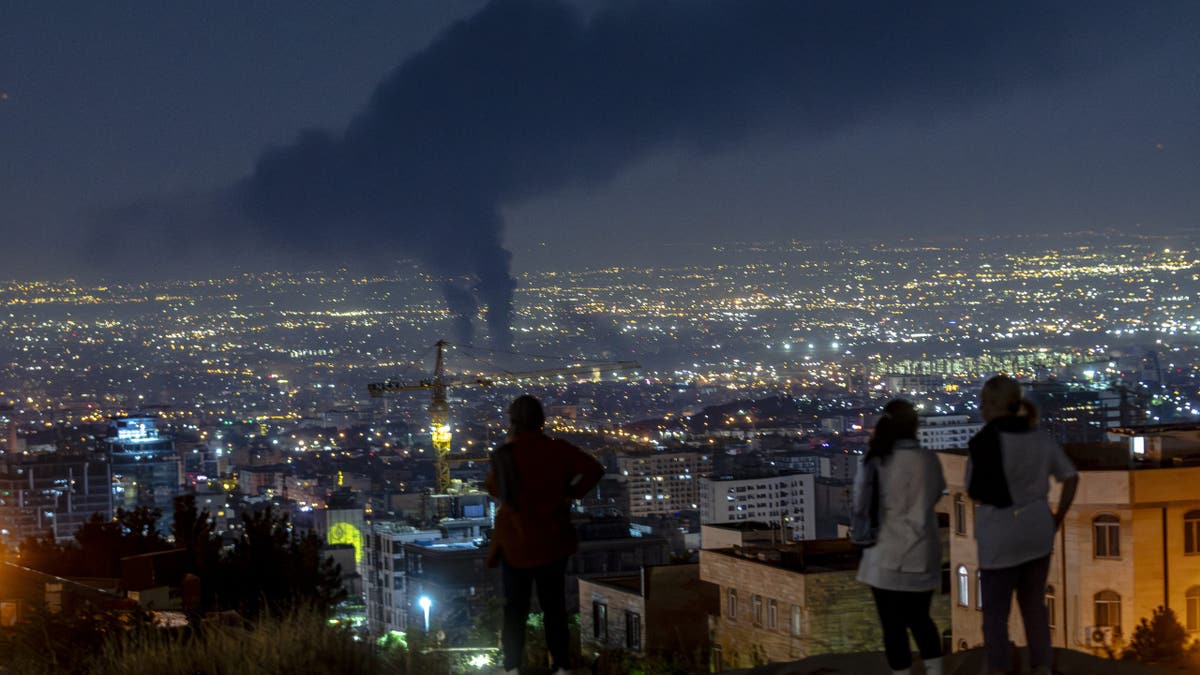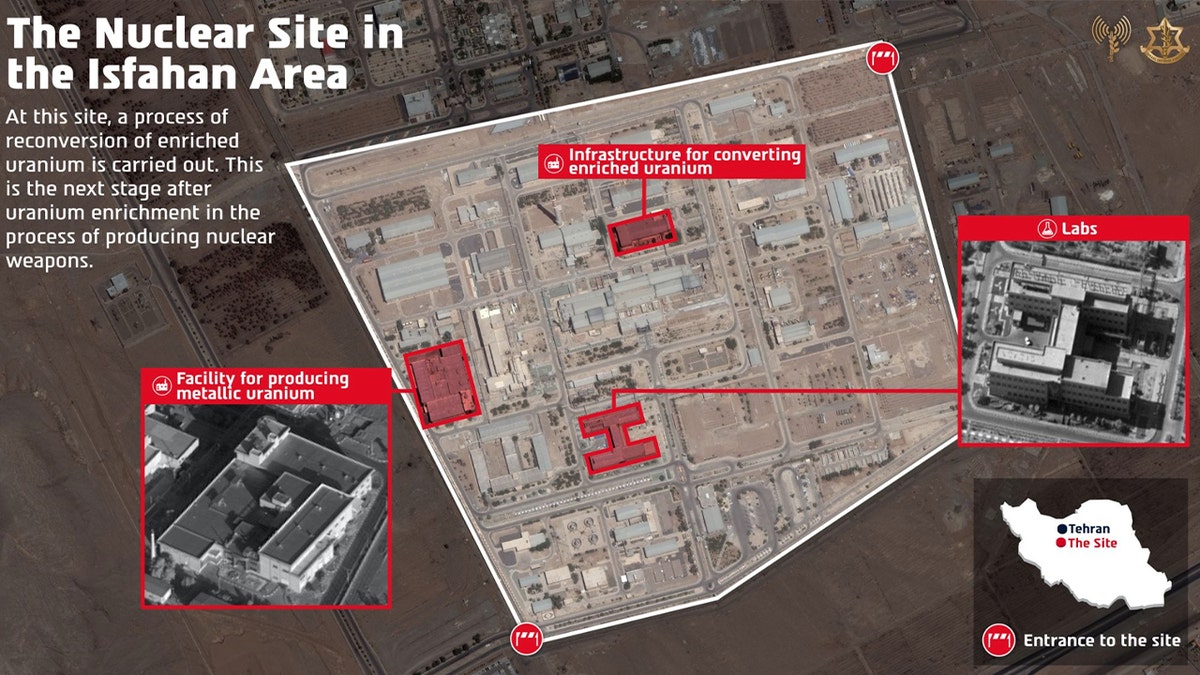NEWYou can now listen to Fox News articles!
Israeli Defense Forces (IDF) hit the Isfahan nuclear site in Iran on Friday night, a location where uranium moves beyond enrichment to the “reconversion” process of building a nuclear bomb.
“The strike dismantled a facility for producing metallic uranium, infrastructure for reconverting enriched uranium, laboratories, and additional infrastructure,” the IDF said on Friday.
On Friday evening, video footage posted by Iranian media showed Iranian air defenses attempting to intercept a fresh wave of Israeli attacks on the site, adding it to a list of nuclear sites targeted that includes the key Natanz facility.
HOW CLOSE WAS IRAN TO A NUCLEAR WEAPON BEFORE ISRAEL’S STRIKE ON TEHRAN?

People gather on a hill to watch smoke rising in the distance from an Israeli airstrike in Tehran, Iran, on June 14, 2025. Iran’s foreign minister said the country would respond “decisively and proportionally” to a wave of attacks that Israel launched beginning in the early hours of June 13. The attacks targeted multiple military, scientific and residential locations, as well as senior government officials. (Photo by Khoshiran/Middle East Images/AFP via Getty Images)
The IAEA has confirmed that a nuclear facility in Isfahan was struck by Israel, but its operational status remains unknown.
“Isfahan’s uranium conversion facility is at the heart of Iran’s quest for domestic fuel cycle mastery,” Behnam Ben Taleblu, senior director at the Foundation for Defense of Democracy’s Iran program, told Fox News Digital.
At Isfahan, uranium is converted into a state suited for gaseous enrichment.
“Crippling this capacity at Isfahan would disconnect the dots between Iran’s diverse nuclear industry and potentially handicap future efforts to prepare uranium for enrichment.”

The IDF Struck the Nuclear Site in the Isfahan Area (IDF)
Direct bombing of a facility that stores nuclear fuel represents a major blow to Iran’s nuclear program – but also risks radioactive spills. Israel avoided hitting Iran’s supply of near-bomb-grade nuclear fuel at Isfahan, the New York Times reported.
“All these developments are deeply concerning,” the International Atomic Energy Agency (IAEA) Director General Rafael Grossi said in a statement on the attacks. “I have repeatedly stated that nuclear facilities must never be attacked, regardless of the context or circumstances, as it could harm both people and the environment.”
Israel has now targeted over 200 sites in Iran in its move to eliminate Iran’s nuclear capability.
IAEA CHIEF CALLS ISRAELI PRESIDENT, REPORTEDLY SAYS IRAN NUCLEAR FACILITY WAS SEVERELY DAMAGED

Technicians work inside of a uranium conversion facility producing unit March 30, 2005, just outside the city of Isfahan, about 254 miles (410 kilometers), south of the capital, Tehran, Iran. The cities of Isfahan and Natanz in central Iran are home to the heart of Iran’s nuclear program. The facility in Isfahan makes hexaflouride gas, which is then enriched by feeding it into centrifuges at a facility in Natanz, Iran. Iran’s President Mohammad Khatami and the head of Iran’s Atomic Energy Organisation Gholamreza Aghazadeh visited the facilities. (Getty Images)
Iranian media reported on Saturday that Israel had struck near the northwestern Tabriz refinery, reporting three missile strikes in locations near western Iran.
The Israeli military said that initial strikes had taken out nine nuclear scientists, in addition to top generals in the Iranian Revolutionary Guard Corps (IRGC) and dozens of others.
Iran’s counter-strikes have killed three Israelis.
Experts have long warned that Iran is weeks away from enriching uranium to a weapons-grade 90%, and Israeli intelligence sources suggest Iran had moved beyond enrichment into the early production phase of a nuclear weapon.
CLICK HERE TO GET THE FOX NEWS APP
The IAEA has warned of Iran’s “rapid accumulation of highly enriched uranium” and said the regime has been opaque about providing details on its use.
(Except for the headline, this story has not been edited by PostX News and is published from a syndicated feed.)

